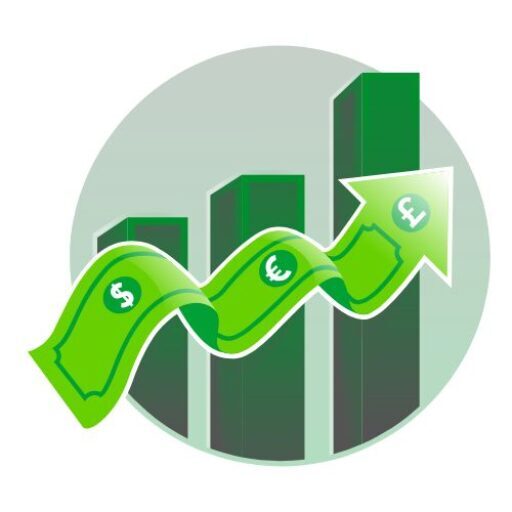Debt is a common concern for many South Africans. With rising living costs and economic pressures, figuring out how to manage repayments while meeting essential expenses can be overwhelming. Balancing these financial responsibilities requires careful planning and prioritization. Understanding how to navigate this complex landscape is vital for long-term financial health.
Many individuals find themselves juggling various debts—credit cards, personal loans, and mortgages—while trying to ensure they can afford rent, utilities, and groceries. This struggle can lead to stress and anxiety, making it crucial to develop an effective strategy. By creating a clear distinction between essential and non-essential expenditures, one can start prioritizing debt repayments sensibly.
In this article, we will explore practical strategies for managing debt repayment while ensuring that basic living expenses are adequately covered. The following sections will provide a comprehensive understanding of how to achieve this delicate balance.
Understanding Debt and Essentials
Before diving into strategies for debt repayment, it’s crucial to understand what constitutes essential expenses. Essentials are those necessary for daily living and must be prioritized. Examples include housing, food, transportation, and healthcare.
Conversely, debt repayment is also crucial but can sometimes feel secondary to immediate needs. However, if left unaddressed, debt can snowball, accruing interest and leading to financial difficulty. Balancing these two aspects is key to financial well-being.
Many people struggle to differentiate between wants and needs. Needs are non-negotiable, while wants are items that can be postponed. Developing a clear understanding helps in effective budgeting and prioritization.
Assessing both essential expenses and debts provides insight into existing financial pressures. A detailed review can highlight spending patterns, enabling better prioritization. Emphasizing both areas creates a solid foundation for future decisions.
By recognizing the difference between essentials and debts, individuals can implement the right strategies to manage repayments. This understanding fosters responsible financial management and enhances overall well-being.
Creating a Budget
A well-structured budget is indispensable when prioritizing debt repayment. Start by listing all sources of income, which will create a clear financial picture. This step is foundational in managing expenses efficiently.
Next, detail all monthly expenses, categorizing them into essentials and non-essentials. Essentials include rent, utilities, food, and transportation. Non-essentials may involve dining out, entertainment, or subscription services.
Once you have a clear overview, allocate a specific percentage of income towards essential expenses. The 50/30/20 rule is a popular guideline—50% for needs, 30% for wants, and 20% for savings and debt repayment.
Adjust the plan according to unique circumstances. If debts are significant, consider allocating a larger portion of the budget towards repayment instead of savings. This adjustment ensures pressing debts are managed more efficiently.
Regularly review and revise the budget as needed. Changes in income or expenses may necessitate adjustments in allocation. A flexible, dynamic budget ensures sustained focus on managing both essentials and repayments.
Prioritizing Debt Types
Not all debts are created equal. Categorizing debts based on interest rates and urgency is an essential practice for effective repayment strategies. Secured debts, like mortgages, typically hold lower interest rates than unsecured debts, like credit cards.
Start by identifying high-interest debts and prioritize them for repayment. It’s often better to pay off debts with higher rates first, as they accumulate interest more quickly. Making extra payments can significantly reduce overall interest paid.
A debt avalanche method focuses on addressing high-interest debts first, while the snowball method prioritizes smaller debts. Choose the strategy that resonates most, considering your mental well-being alongside financial obligations.
Create a list of all debts owed, along with their respective minimum payments and interest rates. This transparent view enables a structured approach to tackling debts effectively. Strategize the repayment based on prioritization.
Prioritizing debts ensures that resources are allocated where they count the most. This focus aids in climbing down the debt spiral and eventually achieving a debt-free life.
Cutting Non-Essential Expenses
After establishing a budget, examine non-essential expenditures for potential cuts. Reducing discretionary spending can free up funds needed for debt repayment. Start by reviewing subscription services and dining out habits.
Implementing temporary spending freezes can help redirect funds towards debt repayments. For example, consider a month without non-essential shopping. These small sacrifices can lead to significant savings over time.
Track all spending for a month to identify areas where cuts can be applied. Often, tracking habits reveals unnecessary expenses that can be minimized or eliminated altogether, allowing more funds for debt repayment.
Consider seeking alternatives to expensive habits, like cooking at home instead of dining out. Simple adjustments can yield substantial benefits, and developing frugal habits can be rewarding in the long run.
By focusing on cutting non-essential expenses, individuals can prioritize necessary repayments more effectively. This strategic shift empowers better financial management while addressing immediate economic needs.
Establishing an Emergency Fund
Despite the importance of debt repayment, having an emergency fund is also essential. Unexpected expenses can arise, such as medical emergencies or car repairs, that shouldn’t derail progress in paying off debt.
Start by saving a small amount each month, aiming for three to six months’ worth of essential expenses. While this may seem challenging, having a financial cushion provides peace of mind and financial security.
Consider setting aside any bonuses or gifts to build the fund quicker. This approach allows individuals to focus on long-term financial goals without anxiety over unexpected costs.
Automate savings contributions to ensure funds are deposited into the emergency account right away. This strategy creates a consistent savings habit and prevents the temptation of spending that money instead.
Establishing an emergency fund ultimately supports repayment efforts. It serves as a safety net, allowing individuals to manage expenses without resorting to additional debt when sudden costs arise.
Using Debt Consolidation Wisely
Debt consolidation can be a useful strategy for managing repayments. By combining multiple debts into a single loan, individuals may benefit from lower interest rates and simplified monthly payments.
Before opting for debt consolidation, assess whether it suits your financial situation best. Research various consolidation options, such as personal loans or dedicated debt consolidation services, to find the best fit.
It’s crucial to understand that while consolidation can reduce monthly payments, it may extend the repayment term. Be cautious of falling into a cycle of accumulating more debt during this process.
Create a roadmap for repayment after consolidation. Set clear milestones to gauge progress and ensure that the new consolidated debt remains a manageable responsibility.
Utilizing debt consolidation effectively can strengthen repayment strategies. With careful management, it can lead to reduced stress and a more straightforward path to a debt-free future.
Assessing Progress and Making Adjustments
Regularly assessing progress helps gauge the effectiveness of your debt repayment strategy. Create a tracking system to monitor payments, remaining balances, and progress towards financial goals.
Maintain flexibility in your debt management approach. Life circumstances can change, so adjusting the plan accordingly keeps individuals on track while addressing current needs and challenges.
Revisit the budget every few months to account for changes in income or expenses. Continually tweaking the budget ensures it aligns with personal financial situations while prioritizing both essentials and debt repayment.
Don’t hesitate to seek support or advice from financial professionals if needed. Understanding personal finances can be challenging, and expert guidance can provide clarity and renewed focus on achieving financial goals.
Assessing progress not only evaluates repayment effectiveness but also bolsters motivation to continue making responsible financial choices. An ongoing commitment ultimately leads to financial freedom.
Conclusion
Prioritizing debt repayment while managing essential living expenses is a challenging but achievable goal. It requires strategic planning, a clear budget, and a commitment to sustainable financial habits.
By understanding the nature of debts and necessities, individuals can craft personalized strategies to manage their finances effectively. Ongoing evaluation, adjustment, and commitment to prioritization remain critical components.
Emphasizing the importance of both managing essentials and repaying debt fosters a healthier financial future. Implementing these strategies provides a tangible pathway towards financial stability.
Ultimately, financial freedom is possible through careful planning and a dedication to responsible decision-making. Taking these steps can lead to not just debt relief, but also a more secure and fulfilling life.

